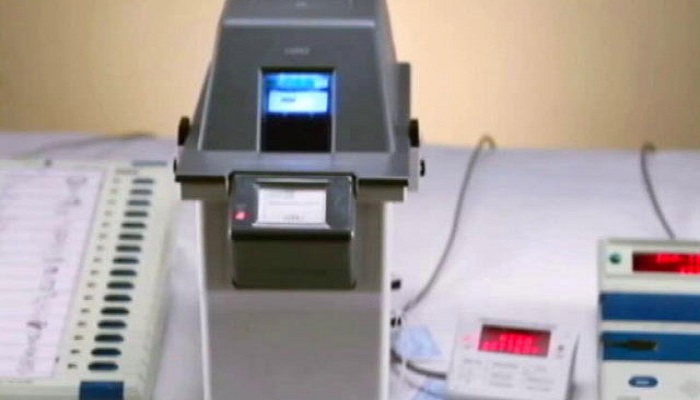
Union Cabinet purchased around 16,15,000 units of Voter-Verifiable Paper Audit Trail (VVPAT) that will work as an addition to the Electronic Voting Machine (EVM).
This has been set up after an express request by Election Commission,because of complaints of probable tampering of the voting machines by various political parties. The VVPAT units will be manufactured and used across the board during the next Lok Sabha elections in 2019.
VVPAT, as the term suggests, is an EVM-connected verification printer machine. It allows voters to verify if their vote has indeed gone to the intended candidate by leaving a paper trail of the vote cast.
The VVPAT units will be manufactured and used across the board during the next Lok Sabha elections in 2019.
VVPAT is an EVM connected verification printer machine. It allows voters to verify if their vote has indeed gone to the intended candidate by leaving a paper trail of the vote cast.
The Election Commission started using Electronic Voting Machines on experimental basis from 1998.It was fully deployed in all states during elections in 2001.
Before this EVMS , ballot paper was used for elections.This practice has led to many malpractices and rigging in elections such as stuffing of the ballot box with ballot paper and preventing voters from voting through intimidation.
Also,ballot paper-based voting also resulted in the casting of a high number of invalid votes,voters wrongly registering their choices instead of placing seals, and so on. The deployment of EVMs allowed for an elimination of invalid votes as the voting process was made much easier, registering the vote by pressing a button. It also allowed for a quicker and easier tallying of votes.
EVMs made it difficult to commit malpractices such as stuffing of ballot boxes, as they allowed for only five votes to be registered every minute, discouraging mass rigging of the scale that was seen in earlier days when ballot papers were used by the Election Commission.
Cumulatively, the tallying and elimination of invalid votes reduced the scope for human error in the electoral process.
Many complaints came up recently stating that EVMS can be tampered, even Election Commission has addressed the possibility of tampering by gradually introducing newer security and monitoring features, upgrading first generation with second generation ones that allow for dynamic coding and time-stamping of operations on ballot units and later, third generation ones that have features such as tamper-detection and self-diagnostics. Besides these, there are procedural steps that prevent EVMs from being stolen and tampered with. The introduction of the VVPAT adds another layer of accountability to the EVM and also allows for verification of the machine-generated mandate through the paper trail.

Post Your Comments